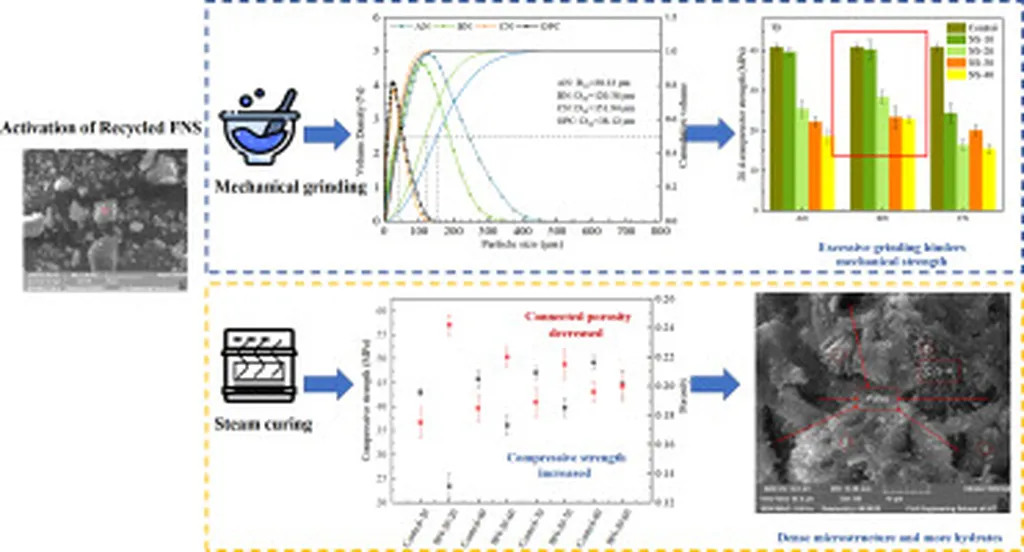In the quest for sustainable construction materials, researchers have turned to an unlikely ally: ferronickel slag (FNS), a by-product of the energy-intensive ferronickel production process. A recent study led by Tae Yeon Kim from the Department of Smart City Engineering at Hanyang University has shed light on the potential of FNS aggregates to revolutionize cement mortar, offering a promising solution for the energy sector’s waste management and resource optimization challenges.
The study, published in the International Journal of Concrete Structures and Materials (한국콘크리트학회지), explores the influence of FNS aggregates on alkali silica reactivity (ASR) and mechanical properties of cement mortar. The findings reveal a compelling narrative of balance and potential. “We found that a 50% replacement of standard sand with FNS aggregates yielded the highest compressive strength, reaching up to 59.49 MPa,” Kim explains. This enhancement in mechanical properties could translate to more durable and robust structures, reducing maintenance costs and extending the lifespan of buildings and infrastructure.
However, the story is not without its complexities. The study highlights that FNS aggregates exhibit high reactivity in strongly alkaline environments, with expansion levels exceeding ASTM limits in NaOH solutions. “This poses challenges for their use in certain alkaline environments,” Kim acknowledges. Yet, the aggregates showed innocuous expansion in water and Ca(OH)₂ environments, indicating a stabilizing effect that warrants further exploration.
The research employs regression analysis and 3D visualization to provide a comprehensive understanding of FNS aggregates’ behavior. This analytical approach not only underscores the potential of FNS aggregates but also sets a precedent for future studies in the field. By leveraging advanced statistical and visualization techniques, researchers can gain deeper insights into the properties and performance of alternative construction materials.
The commercial implications for the energy sector are significant. The ferronickel industry generates substantial amounts of slag, which is often disposed of in landfills, incurring costs and environmental impacts. By repurposing FNS as a construction material, energy companies can reduce waste disposal expenses and contribute to a circular economy. Moreover, the enhanced mechanical properties of cement mortar with FNS aggregates can lead to more efficient and cost-effective construction practices.
As the construction industry continues to seek sustainable and innovative solutions, the findings of this study offer a glimpse into the future. The balanced use of FNS aggregates in cement mortar presents a viable path towards optimizing resource utilization and minimizing environmental impact. “This research opens up new avenues for the application of industrial by-products in construction,” Kim notes, highlighting the potential for further exploration and development in this area.
In the broader context, the study underscores the importance of interdisciplinary collaboration and advanced analytical techniques in driving innovation. By bridging the gap between the energy and construction sectors, researchers can unlock new opportunities for sustainable development and resource optimization. As the industry moves towards a more circular and eco-friendly future, the insights gained from this research will undoubtedly play a pivotal role in shaping the next generation of construction materials and practices.

